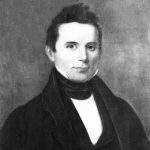Tracking the migration of names through marriage and adoption is a common challenge faced by all family historians. Locating and understanding the names of Native American ancestors often adds an extra layer of complexity to an already daunting task.
Naming traditions vary widely by tribe and historical period. One could write an entire encyclopedia dedicated to the subject, but I thought I’d pass along some general background to help you understand the traditions.
TRADITIONAL NAMES
Pre-contact naming conventions varied widely by tribe and clan. In general, one would be given a name at birth and would be identified by that name and additionally your clan and perhaps even your village or town. In some tribes, an individual might have several names throughout his or her life – one at birth, another at adulthood, a nickname and a name related to achievements (such as a warrior). In Cherokee tradition, a person might also change their name if one of the medicine people believed there was a spiritual problem with their current name.
Indian names were given in the tribal language and only translated into English when the circumstances dictated. Hollywood has done much to create a mystique around Indian names with its many fanciful characters over the years. In truth, Indian names were often less dramatic than what most people realize. Animal names were common – Bear, Mouse, Deer, etc. – but you also had names that were descriptive and held meaning only to that person, their family or clan (Dirt Thrower, Peach Eater, Augerhole, etc.)
EUROPEAN NAMES

After contact with Europeans, Native American naming traditions changed slowly. How slowly depended upon the tribe, the length of contact with Europeans and the rate of intermarriage. When it came time to adopt surnames, there were a variety of ways to go. One might adopt a father’s Indian name as their surname (Mankiller). Children of non-Indian fathers would sometimes adopt his surname, which was common or take his first name as their surname. Some of the descendants of a Cherokee named Hair Conrad took the name “Hair” as their last name while others kept the surname “Conrad”. Some Indian surnames were translated (Deer-in-Water) while others were spelled out phonetically in English (Oosahwee). One of my collateral ancestors’ first name appears as both “Tuya” and “Bean” on different tribal records around the turn of the century. Tuya (pronounced tooh-yah) is the Cherokee word for “bean”.
Indians might take on English names if they converted to Christianity or out of respect for a benefactor. Elias Boudinot, famous as the first editor of the Cherokee Phoenix newspaper, was originally named Buck Watie. He took the moniker of Elias Boudinot after a patron who paid for him to attend school in Connecticut.
INDIAN NAMES TODAY
In modern times, Native American children will most often be given English names as their legal name, but more traditional parents and grandparents may also give the child an “Indian name.” This name, given in the tribal language, is a way to connect the child to his/her people and may not always be shared with those outside the tribal community. Even as early as the U.S. Census of 1900, which included Indians in Indian Territory, one can see tribal members identified by English names and on a separate schedule their Indian names. For tribes with a long history of intermarriage, it’s common to find English surnames, so it’s important to be doubly certain that one has the correct group of people identified and not simply a group with the same last name.
